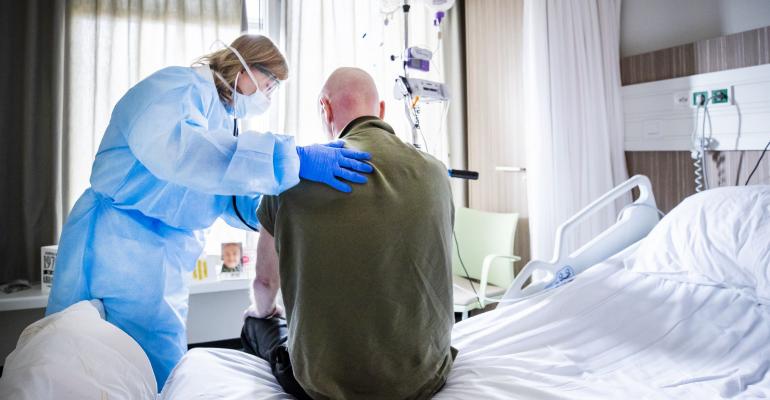The COVID-19 health crisis is disproportionately affecting seniors. Based on data published by the Journal of American Medical Association (JAMA) in February 2020, the mortality rate of those persons who have been diagnosed with COVID-19 over 80 years of age is 14.8 percent; this compares with 8.0 percent for those between 70 and 79, 3.6 percent for those between the ages of 60 and 69, and 0.3 percent for those in their 40s. Unfortunately, this virus is attracted to the oldest of the old. This is because this cohort is much more susceptible to infection than the rest of the public, often has weaker immune systems, and frequently has other pre-existing medical conditions such as heart disease, diabetes, cancer, or high blood pressure.
There are roughly 13 million Americans older than 80 years in the United States. More than one in five of these seniors reside in institutional-quality skilled nursing or seniors housing properties, with roughly half of these in skilled nursing properties and one half in seniors housing, according to data from the NIC MAP® Data Service. Seniors housing is defined as independent living, assisted living and memory care.
Skilled nursing residents are particularly vulnerable to COVID-19 because the people who live in skilled nursing properties are the most frail and often require significant professional nursing care. They typically have multiple chronic conditions which require around-the-clock care by qualified professionals in specialized settings. In contrast, residents in independent living, and frequently assisted living, require less medical attention and more assistance with activities of daily living such as dressing and medication management or, in the case of independent living, require no care—medical or living—at all. Notably, because most senior care residents have limited mobility and multiple conditions, they cannot get the care and support they require if they moved back in with their families.
Healthcare workers who care for residents in both seniors housing and skilled nursing properties are often the very first line of defense to protect residents and patients from COVID-19. Hospitals are not the only places where frontline healthcare workers are risking their lives. Seniors housing and skilled nursing staff also need the same attention and protection as hospital workers—access to testing and personal protection equipment (PPE). This has been the case since the beginning of the coronavirus crisis and remains a critical concern among operators and capital providers for seniors housing and care properties. Staff members need PPE and widespread testing for COVID-19 to continue to protect and provide assistance to seniors in their place of residence—whether it is in a seniors housing or skilled nursing property.
The bottom line is that by prioritizing frontline health care workers’ needs, we will be able to keep seniors safe and healthy, and prevent them from needing to go the hospital, thereby helping to flatten the curve. The health of residents depends upon these frontline workers who deserve our collective support.
Therefore, it is imperative for policymakers and the public to support the brave frontline caregivers by ensuring these workers have broad access to personal protective equipment and adequate testing. The only way to stop the spread of this disease and minimize healthcare risks for seniors is to protect and support these workers.
Beth Burnham Mace is chief economist with National Investment Center for Seniors Housing & Care (NIC).





